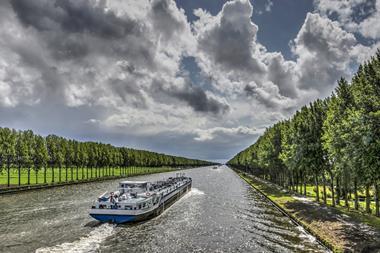RUSSIA – Russia's funded second-pillar pension system is set to follow the likes of Poland, Slovakia and the Baltic states in a plan drawn up by prime minister Dmitry Medvedev's government to cut mandatory contributions from 6% to 2%.
As in other Central and Eastern European (CEE) countries, the rationale behind the cuts is to finance the first-pillar pay-as-you-go (PAYG) deficit.
While opposed by the finance and economy ministries, the proposal, set for parliamentary debate in mid-December, has been pushed through by the labour and social security ministry.
In November, president Vladimir Putin endorsed the plan, while suggesting its implementation be delayed till January 2014.
Russia's second-pillar system dates back to the pension reforms that started in 2002.
Workers can either choose to have their contributions invested in one the many privately run non-state pension funds (NSPFs) or the default option of state-owned Vnesheconombank (VEB).
As of mid-2012, VEB had RUB1.4trn (€35.9bn) in second-pillar assets, the 105-odd NSPFs RUB558.3bn and 15.4m members.
Opponents of the proposed changes argue that it is very much a short-term solution.
Maxim Oreshkin, chief economist for Russia at VTB Capital in Moscow, said: "While it would allow the pension system deficit to be lowered for at least the next few years – which, on a standalone basis, is a good thing – it would negatively affect investments and GDP growth, and it would not solve pension system problems in the longer term either."
He said the proposals would reduce long-term savings, as well as investment and GDP.
"In addition, because a shift of 4% from the funded part is a hidden increase in taxation, this would likely be an additional stimulus for the 'grey part' of the economy to continue avoiding paying taxes," he said.
"Thus, eventually, due to lower GDP and a higher share of the 'grey economy', revenues collected by the government might appear lower than if the current system were maintained."
Russia's current first-pillar deficit is exacerbated by the system's structure.
The retirement age, of 55 years for women and 60 years for men, is low by European standards, and requires only five years' contributions for the basic pension.
In addition, many categories of workers can retire at an earlier age.
Along with other allowances, the pension wage replacement rate is around 40%.
An IMF working paper published this August highlighted that, due to a combination of rising life expectancy and a low fertility rate, the old-age dependency ratio would rise from around 18% in 2010 to 36% by 2050.
The paper estimates that projected government spending on pensions over this period will grow from 9% of GDP to 16% – compared with 11% in so-called advanced economies and other emerging European countries.
Raising the retirement age for both sexes, the paper says, would be the single most effective measure to contain state pension spending, a policy endorsed by Russia's finance and healthcare ministries – but not the president.
Pensioners make up a powerful voting bloc, accounting for around 40% of the electorate.
In his presidential election campaign earlier this year, Putin promised to keep the retirement ages unchanged.











No comments yet